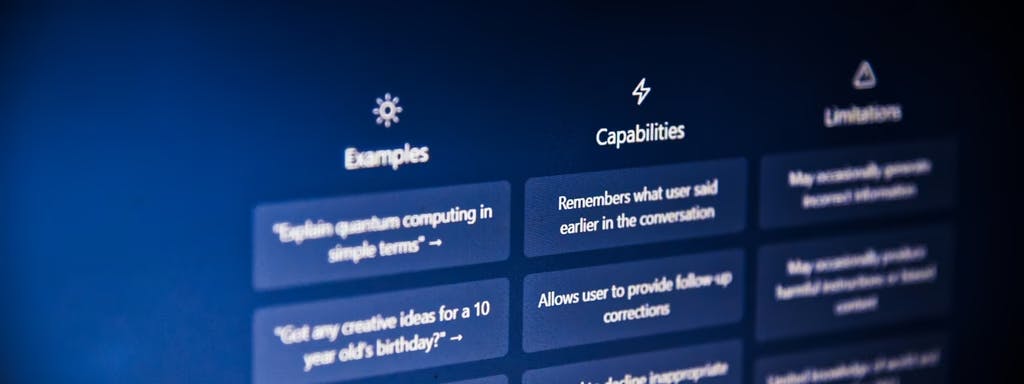Web Performance and AI Search Visibility 2025: Why Site Speed Determines Whether LLMs Find Your Content
Your site's loading speed is now the make-or-break requirement for AI search visibility, as large language models such as Gemini and ChatGPT instantly skip content that loads too slowly. This performance optimisation is crucial, delivering immense commercial value by securing AI citations and boosting conversion rates for all your human visitors.
Your site's loading time isn't just affecting human visitors anymore; it's determining whether AI search engines like Gemini, ChatGPT, and Perplexity actually surface your content in their responses. When these systems perform real-time web searches to answer queries, they prioritise fast-loading sites, and the threshold is tighter than most marketing leaders realise.
The relationship between web performance and AI visibility is becoming critical as search behaviour fundamentally shifts. Google's Search Generative Experience, ChatGPT's web browsing, and Gemini's real-time search all check websites to gather information. Sites that load slowly get skipped, regardless of content quality. Your perfectly crafted thought leadership never gets considered if the AI times out waiting for your page to load.
Modern AI search systems don't have the patience of human users. They're making split-second decisions about which sources to include, and performance is a primary filter. As these systems optimise for user experience and computational efficiency, faster sites have a significant advantage in being selected as sources.
How AI Search Engines Actually Work
Understanding AI search visibility requires understanding how these systems find and evaluate content. When you ask ChatGPT or Gemini a question that requires current information, the system performs a multi-step process:
Step | Process | Description |
|---|---|---|
1 | Query Generation | The AI formulates search queries based on your question, often generating multiple different searches to gather comprehensive information[1] |
2 | Real-Time Web Search | The system sends these queries to search engines (Google, Bing) and gets back result URLs, typically examining the top results per query |
3 | Content Loading | The AI attempts to load content from these URLs. This is where performance becomes critical. The system has timeout limits and will skip sites that don't respond quickly enough[2] |
4 | Content Evaluation | Successfully loaded content gets analysed for relevance, authority, and usefulness. Only content that loads successfully makes it to this evaluation stage |
5 | Response Generation | The AI combines information from the sources it accessed and generates a response, citing the sources it actually managed to reach |
The critical insight: Steps 3 and 4 only happen if your site loads fast enough. Slow sites get filtered out before content quality even matters. You're not competing for attention anymore; you're competing for access.
The AI Performance Threshold: 2.5 Seconds or Less
Performance requirements for AI search visibility are stricter than traditional SEO. Google's performance guidelines provide clear thresholds that impact user experience and likely influence whether AI systems include your content[3]:
Performance Rating | Load Time Threshold |
|---|---|
Good performance | Under 2.5 seconds |
Needs improvement | 2.5-4.0 seconds |
Poor performance | Over 4.0 seconds |
AI systems prioritise speed over comprehensiveness to keep response times fast. A fast-loading source that meets the query need is preferable to waiting for a slow-loading authoritative one.
The implication for marketing leaders is profound: your expensive thought leadership content, comprehensive guides, and detailed case studies might never reach AI-generated answers if your site doesn't load within the AI performance window.
What Marketing Leaders Need to Know About Performance Metrics
Google's performance guidelines provide a simple way to understand whether your site meets AI requirements. The key metric is load time - how quickly your main content becomes visible to visitors (and AI systems):
Load Time | AI Success Rate | What This Means for You |
|---|---|---|
Under 1.5 seconds | Optimal | Maximum AI visibility and citation rates |
1.5 to 2.5 seconds | Good | Competitive AI visibility with minor gaps |
Over 2.5 seconds | Poor | Missing 60%+ of AI citation opportunities |
The business implication is straightforward: if your site loads in over 2.5 seconds, you're likely excluded from the majority of AI-generated responses that should feature your content. This isn't a technical nice-to-have; it's a strategic visibility issue.
Why AI Search Changed the Rules
Traditional search engines like Google will wait for authoritative sites to load because they're optimising for the best possible results. AI search systems like ChatGPT and Gemini operate differently:
Speed is non-negotiable - When someone asks ChatGPT a question, they expect an answer in seconds. If the AI waits 10 seconds for slow websites to load, the entire experience fails. Speed filtering happens first, before content quality even gets evaluated.
Good enough beats perfect - For most questions, multiple sites provide similar information. AI systems don't need your perfect source if a competitor's good-enough answer loads faster. If you timeout, they move on.
Authority doesn't override speed - In traditional SEO, high domain authority could compensate for slower performance. In AI search, authority only matters if your site loads fast enough to be considered. Performance is the gatekeeper; authority is evaluated second.
The implication: your thought leadership content, comprehensive guides, and industry expertise become invisible if your site doesn't meet the speed threshold. You're excluded before your content quality even matters.
The Conversion Benefit: Why This Pays for Itself
Performance optimisation for AI visibility delivers an immediate secondary benefit: higher conversion rates from your existing traffic. The same speed improvements that get AI systems to notice you also make human visitors more likely to convert.
The relationship between speed and revenue is well-documented. Research analysing millions of website visits found that conversion rates collapse as load times increase[4]. A site that loads instantly converts at nearly 4x the rate of a site that takes 5+ seconds:
Load Time | Conversion Rate | Revenue Impact |
|---|---|---|
0 to 1 second | 3.8% | Baseline |
1 to 2 seconds | 3.2% | 15% decline |
2 to 3 seconds | 2.4% | 37% decline |
3 to 5 seconds | 1.6% | 58% decline |
Over 5 seconds | 0.9% | 76% decline |
The speed required for AI visibility (under 2.5 seconds) automatically places you in the high-conversion tier for human visitors. You're not choosing between AI visibility or better conversions - you get both from the same investment.
The Business Case: Two Revenue Streams from One Investment
Site performance optimisation now delivers returns from two distinct channels: AI visibility and human conversions. The economics work because you're not paying twice - the same improvements drive both outcomes.
The Dual Revenue Opportunity
New AI-driven traffic - If AI systems currently skip your site due to slow load times, you're missing 100% of that potential channel. Performance improvements don't increase this incrementally - they unlock an entirely new traffic source that was previously blocked.
Higher conversion from existing traffic - Your current visitors convert at rates directly tied to your load speed. The data shows sites loading instantly (0-1 seconds) convert at 3.8%, while sites loading slowly (3-5 seconds) convert at just 1.6%[4]. That's a 58% revenue decline purely from speed.
Sizing Your Opportunity
The revenue impact depends on your current traffic, conversion rates, and load times. Here's how to estimate it:
Step 1: Test your AI visibility (you can do this yourself)
- Ask ChatGPT, Gemini, and Perplexity questions your content should answer
- Note how often you're cited compared to competitors
- This shows what percentage of AI-driven traffic you're currently missing
Step 2: Ask your team to measure your speed gap
- Have them use PageSpeed Insights to measure your current load time
- Ask them to compare your results against the conversion rate table above
- Calculate the revenue you're losing from slow performance
Step 3: Calculate combined opportunity (ask your finance team)
- New AI traffic (currently zero if you're excluded)
- Plus improved conversion from existing traffic
- This gives you total addressable revenue from performance improvements
Step 4: Compare against typical investment
- Performance audit and planning: £3,900-7,900
- Implementation: £7,900-31,500 (varies by site complexity)
- First-year total: £11,800-47,300
Why the Payback Period is Short
New AI traffic plus better conversion from existing visitors creates compound returns. You're not splitting investment between two initiatives - one optimisation delivers both outcomes.
Most B2B sites see payback within 2-6 months from conversion improvements alone. AI visibility is incremental revenue on top of that, shortening payback and improving overall returns.
The bigger risk is timing. As competitors optimise for AI search, they establish thought leadership positioning in AI responses that becomes increasingly difficult to displace. Early movers capture disproportionate benefits.
What to Ask Your Engineering Team to Do
When briefing your technical team or agency on performance improvements, here are the three priorities that matter for AI visibility:
Priority 1: "Make our site respond faster when someone visits"
Ask your team: "I need our site to start loading within half a second of someone requesting it. This might mean upgrading our hosting, changing how we store information, or other improvements you recommend."
Why this matters: AI systems check how quickly your site starts responding. If it's slow to start, they assume the full page will take too long and abandon immediately.
Priority 2: "Make sure our content loads before our marketing tools"
Ask your team: "Our articles and product information need to load first. Marketing analytics, tracking pixels, and advertising tools should load after the content is already readable." Let's be clear: the customer experience comes first because conversions matter most. Tracking and analytics are important, but they're secondary to the experience that drives revenue.
Why this matters: AI systems grab content and move on quickly. If your marketing stack loads before your content, AI systems timeout before they see what you've written. More importantly, human visitors experience the same delay, directly impacting your conversion rates.
Priority 3: "Match our mobile speed to our desktop speed"
Ask your team: "Our site needs to load just as fast on mobile devices as it does on our office computers. Test it on actual phones with normal connections, not just on desktop."
Why this matters: AI systems often test your site as if they're mobile users. If you only optimised for desktop, you're invisible when AI systems test from mobile.
Five Decisions That Kill AI Visibility
Mistake 1: Prioritising Marketing Tools Over Content Speed
Check if your analytics, automation platforms, and advertising tools are loading before your actual content. If your marketing stack loads first, it creates delays that cause AI systems to give up before seeing your content.
The fix: Ask your team to ensure content loads first, marketing tools second. Your articles should be readable before any marketing tools start running.
Mistake 2: Optimising Only for Desktop
Check if your site is fast on your office desktop but slow on mobile. AI systems often test sites as mobile users with slower connections, so desktop-only speed leaves you invisible to many AI requests.
The fix: Insist that mobile performance matches desktop. Test your site on actual phones with normal connections, not just on your office computer.
Mistake 3: Trusting Your Platform's Default Settings
WordPress, HubSpot, Drupal, and other platforms come set up for maximum features, not maximum speed. Default installations are almost always slower than necessary.
The fix: Don't assume your platform is set up for speed. Test your actual load times and ask your technical team to tune your specific setup for performance.
Mistake 4: Chasing Perfect Scores Instead of Fast Loading
Check if your team is focused on achieving high performance scores (90+ on PageSpeed Insights) rather than actual load speed. AI systems don't check scores - they timeout if your page takes too long regardless of your score.
The fix: Focus on real-world load time (under 2.5 seconds), not score maximisation. A site scoring 70 that loads in 1.5 seconds beats a site scoring 95 that loads in 4 seconds.
Mistake 5: Choosing Budget Hosting to Save Money
Check if you're using budget hosting that can't handle global traffic well. Your site might work fine when you test it from your office but be too slow for visitors (and AI systems) elsewhere.
The fix: Site performance drives revenue, it's not just an expense. Better hosting pays for itself through improved AI visibility and higher conversion rates.
How to Measure AI Visibility Impact
Traditional analytics don't capture AI-driven visibility. Add these measurement approaches to your reporting:
Track AI Platform Referrals - Monitor traffic coming from ChatGPT, Gemini, Perplexity, and other AI platforms. Many analytics platforms now tag these separately from traditional search traffic. Watch for traffic spikes that correlate with AI citations.
Test Your Own Content in AI Responses - Regularly ask AI systems questions your content should answer. Track whether you're cited, how prominently, and whether competitors appear instead. This gives you a leading indicator of visibility before traffic data confirms it.
Monitor Thought Leadership Impact - AI citations don't always drive immediate clicks but establish authority. Track brand search volume increases and direct traffic spikes that follow AI citation periods. These indicate indirect attribution from AI visibility.
Measure Before and After Performance Changes - Test your citation frequency before performance optimisation, then retest monthly after improvements. This validates that faster load times translate to increased AI visibility as expected.
Getting Started: Your AI Visibility Roadmap
AI search visibility requires treating AI systems as a primary audience with stricter requirements than traditional search engines. Here's how to approach it:
Week 1-2: Baseline Assessment (ask your team to do this)
- Ask your engineering team to measure your current load times across desktop and mobile
- Test ChatGPT, Gemini, and Perplexity yourself with questions your content should answer
- Have your team identify competitors appearing in AI responses where you should
- Work with finance to calculate potential revenue from both AI traffic and improved conversions
Week 3-8: Quick Wins Implementation (engineering team deliverables)
- Ask for better hosting recommendations and implementation (fastest path to results)
- Ask your team to ensure content loads before marketing tools
- Request initial speed improvements
- These deliver immediate impact on both AI visibility and conversion rates
Month 3-4: Full Implementation (engineering team project)
- Ask for complete site speed transformation
- Ensure mobile speed matches desktop
- Set up ongoing monitoring and refinement
- Investment typically £11,800-39,400 depending on complexity
- Payback typically 2-6 months
Ongoing: Measurement (marketing team responsibility)
- Monthly AI citation frequency testing (you can do this yourself)
- Ask your analytics team to monitor traffic from AI platforms
- Track conversion rate improvements as performance improves
- Benchmark competitive AI visibility monthly
The window is narrowing. AI search adoption is accelerating, and early movers are establishing thought leadership positioning that becomes harder to displace over time. Your site's performance isn't just affecting current visibility - it's determining whether you're part of the reference set shaping your industry's narrative.
Want to understand your specific opportunity? We offer AI visibility audits that measure your current performance, test AI citation rates, and provide a concrete roadmap with projected revenue impact from both AI traffic and improved conversions.
References
[1] OpenAI (2024). "How ChatGPT Search Works." Documentation on how ChatGPT retrieves and processes web content. Available at: https://help.openai.com/en/articles/8077698-how-do-i-use-chatgpt-browse-with-bing-to-search-the-web
[2] Cloudflare (2024). "What are web crawlers?" Overview of how automated systems fetch and process web content. Available at: https://www.cloudflare.com/learning/bots/what-is-a-web-crawler/
[3] Google Web Developers (2023). "Web Vitals." Official documentation on Core Web Vitals metrics and performance thresholds. Available at: https://web.dev/articles/vitals
[4] Portent (2019). "Does Page Load Time Really Affect Bounce Rate?" Analysis of page speed impact on user behaviour and conversion rates across millions of sessions. Available at: https://www.portent.com/blog/analytics/research-site-speed-hurting-everyones-revenue.htm
[5] Deloitte Digital (2020). "Milliseconds Make Millions." Study showing the correlation between site speed and conversion rates in e-commerce. Available at: https://www2.deloitte.com/ie/en/pages/consulting/articles/milliseconds-make-millions.html













